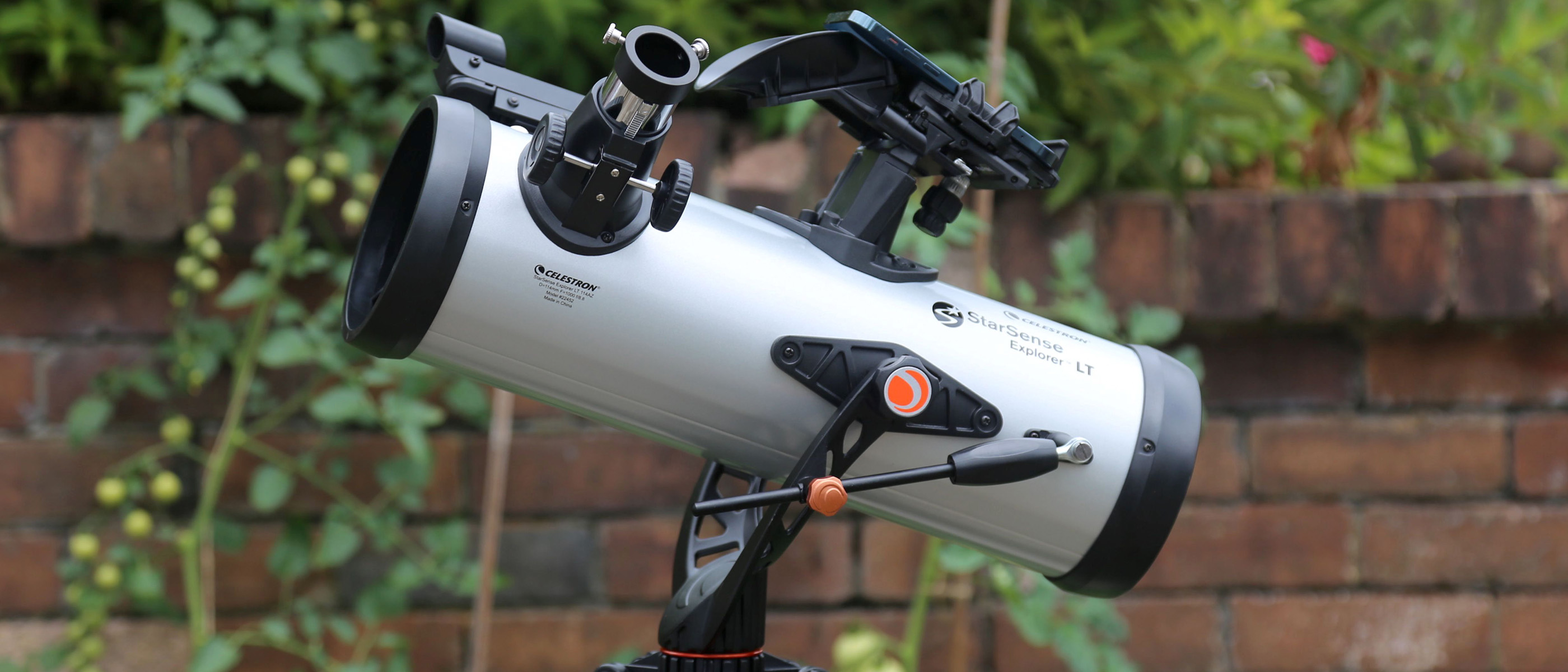Space Verdict
The entry-level for Celestron's excellent StarSense sky recognition app-aligned telescopes is a decent option for observing the moon and planets but lacks the quality in both build and optics to impress with galaxies, nebulae and star clusters.
Pros
- +
StarSense App navigation
- +
Easy to set-up
- +
High magnification for moon and planets
- +
Affordable for budget-conscious
Cons
- -
Lacks precision
- -
Chromatic aberration on bright objects
- -
Images lack clarity
- -
Inconvenient red dot finder
Why you can trust Space.com
A Newtonian reflector with a 4.5-inch/114mm aperture, the Celestron StarSense Explorer LT 114AZ was designed for getting high magnification of bright objects in the night sky.
Aimed at beginners, the LT 114AZ comes with StarSense technology, which is probably the finest solution currently available for aligning a telescope (save for ultra-expensive 'smart' telescopes like the Vaonis Stellina and Unistellar eVscope 2).
Optical design: Newtonian reflector
Aperture: 4.5-inches/114 mm
Focal length: 39.3-inches/1000 mm
Focal ratio: f/9
Eyepiece focal length: 1.25-inches(40x) and 0.4-inches (100x)
Total kit weight: 6.6 lbs/2.99 kg
Mount type: Manual Alt-azimuth
Although the LT 114AZ comes from a diverse line-up of reflectors and refractors that use the same StarSense technology, the 'LT' in its model number denotes that it doesn't have slow-motion controls or allow you to attach 2-inch eyepieces. That's what makes it more affordable but also makes it trickier to aim at desired subjects precisely. Are the trade-offs too much? Here are our thoughts on the LT 114AZ.
Celestron StarSense Explorer LT 114AZ: Design
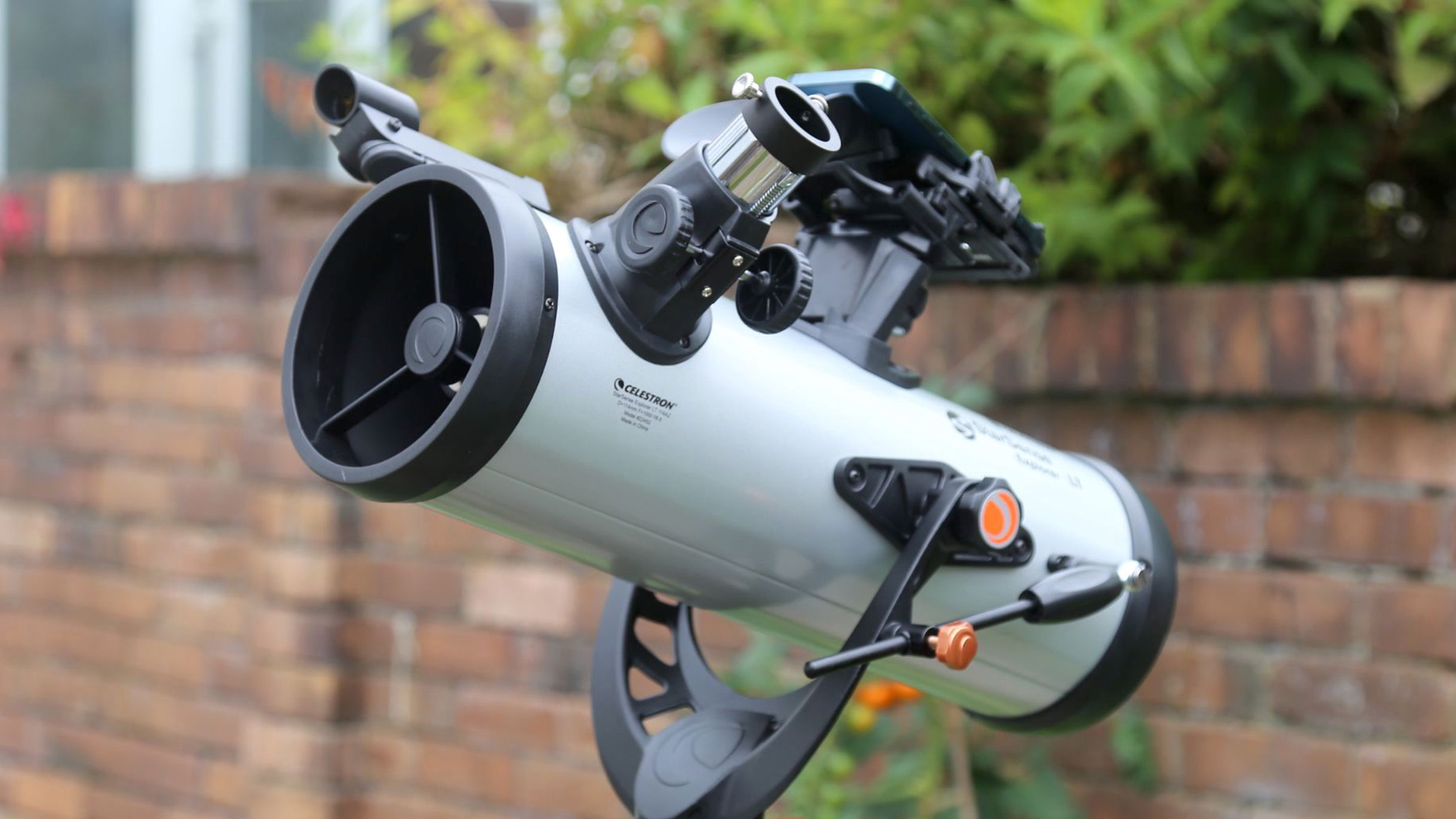
- StarSense Explorer phone dock
- Includes a 2x Barlow lens
- Lightweight, flimsy tripod
Telescopes are always a balance between how much light they let in and how much magnification they usefully offer. The LT 114AZ's balance is tipped in favor of the latter, with its focal ratio of f/9 suggesting that it will offer a lot of magnification for bright objects, but it will struggle to show much detail or brightness from faint deep sky objects. The LT 114AZ, therefore, seems to be a telescope aimed at people wanting a closer look at the moon and planets.
25mm and 10mm eyepieces
2x Barlow Lens
Aluminum tripod
StarSense smartphone dock
StarSense Explorer app
StarPointer red dot finderscope
Celestron Starry Night Basic Edition Software
In the box are 1-inch/25 mm and 0.4-inch/10 mm Kellner eyepieces, the latter of which will help achieve a 100x magnification when moon-gazing and planet-spotting. However, also in the box is a Barlow lens, which doubles that magnification to 200x. That ultimately proves unrealistic.
Given its primary targets, we're not bothered too much about whether the LT 114AZ is lightweight or easy to move since it will be mostly used as a backyard telescope. There isn't much point in traveling to somewhere specific to observe planets and the moon when you can see them from home.
What's unusual about the Celestron StarSense Explorer LT 114AZ compared to most telescopes is that it comes with a universal smartphone holder that attaches to the telescope tube. Also in the box is the unique code for the user to gain free access to Celestron's StarSense app.

Elsewhere in the box is an aluminum tripod with a 1.25-inch Amici diagonal plastic mount (which makes it more convenient to observe targets high in the sky) and a basic StarPointer red dot finderscope.
Celestron StarSense Explorer LT 114AZ: Performance
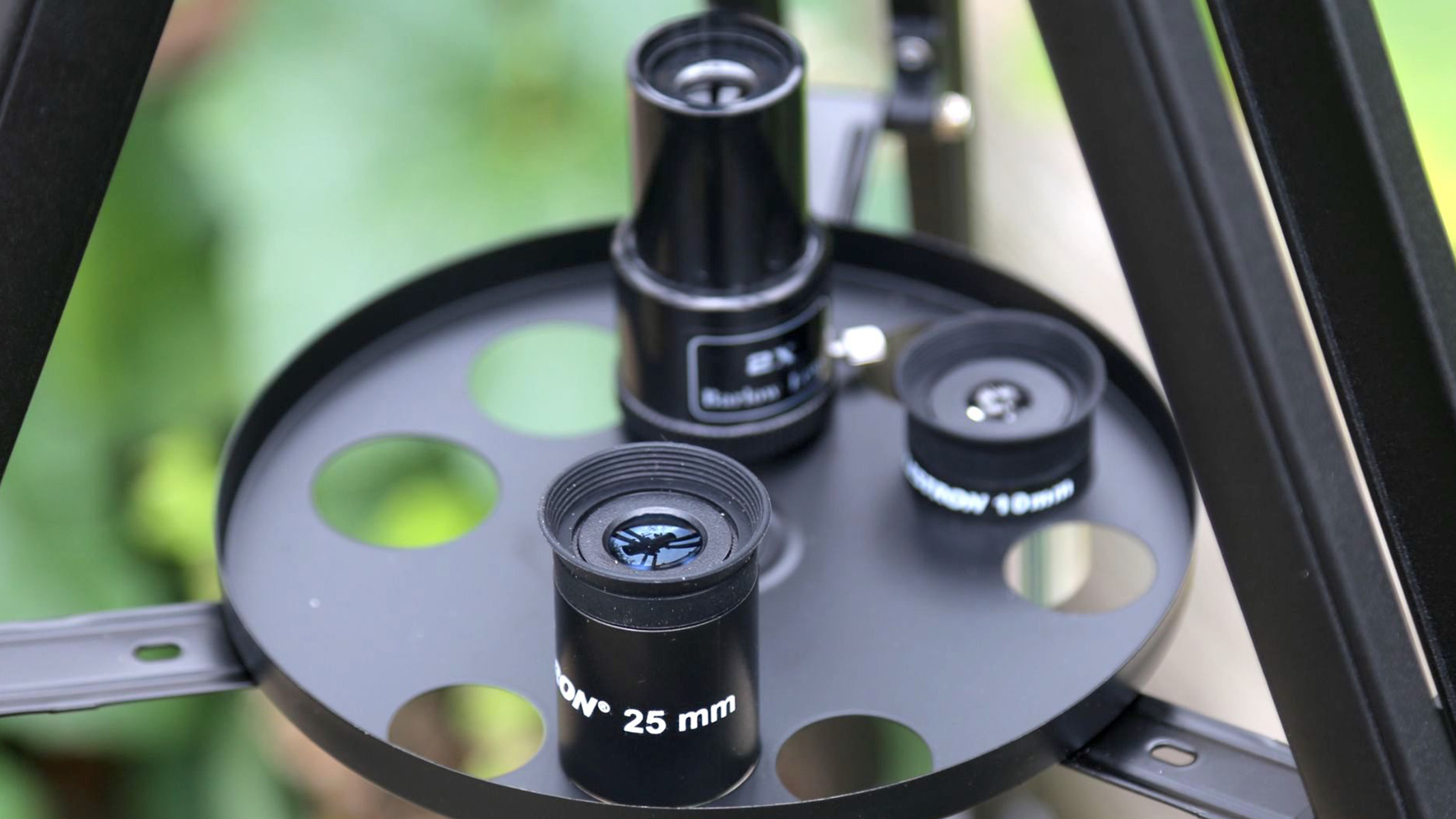
- Best for viewing the moon and planets
- Supplied with average quality eyepieces
- Deep sky targets look dim
The LT 114AZ is primed for planet-spotting, so we aimed it straight at the solar system's giant planet. Jupiter and its moon filled the field of view using the 25mm eyepiece, but there was a distinct lack of accurate color. Although the giant planet and three of its moons appeared sharp, they all portrayed a rainbow of colors, particularly Europa which is closest to Jupiter. Using the Barlow lens with the 25mm created a nice full-screen view of the Jovian System (Jupiter, its rings and moons), but it proved most useful on Saturn where we were treated to lots of detail in the ring pattern. Also visible was Rhea, the second-largest of its 83 moons. Without the Barlow lens its largest moon, Titan, was visible farther out in a wider field of view.
Despite the above, the LT 114AZ doesn't impress with deep-sky objects. Even in a dark, moonless sky, the Andromeda galaxy (M31) appeared faint and small, while the Great Globular Cluster in Hercules (M13) was little more than a faint fuzzy blob, lacking brightness, depth and detail. The Barlow lens isn't useful at all in the deep sky.
Celestron StarSense Explorer LT 114AZ: Functionality
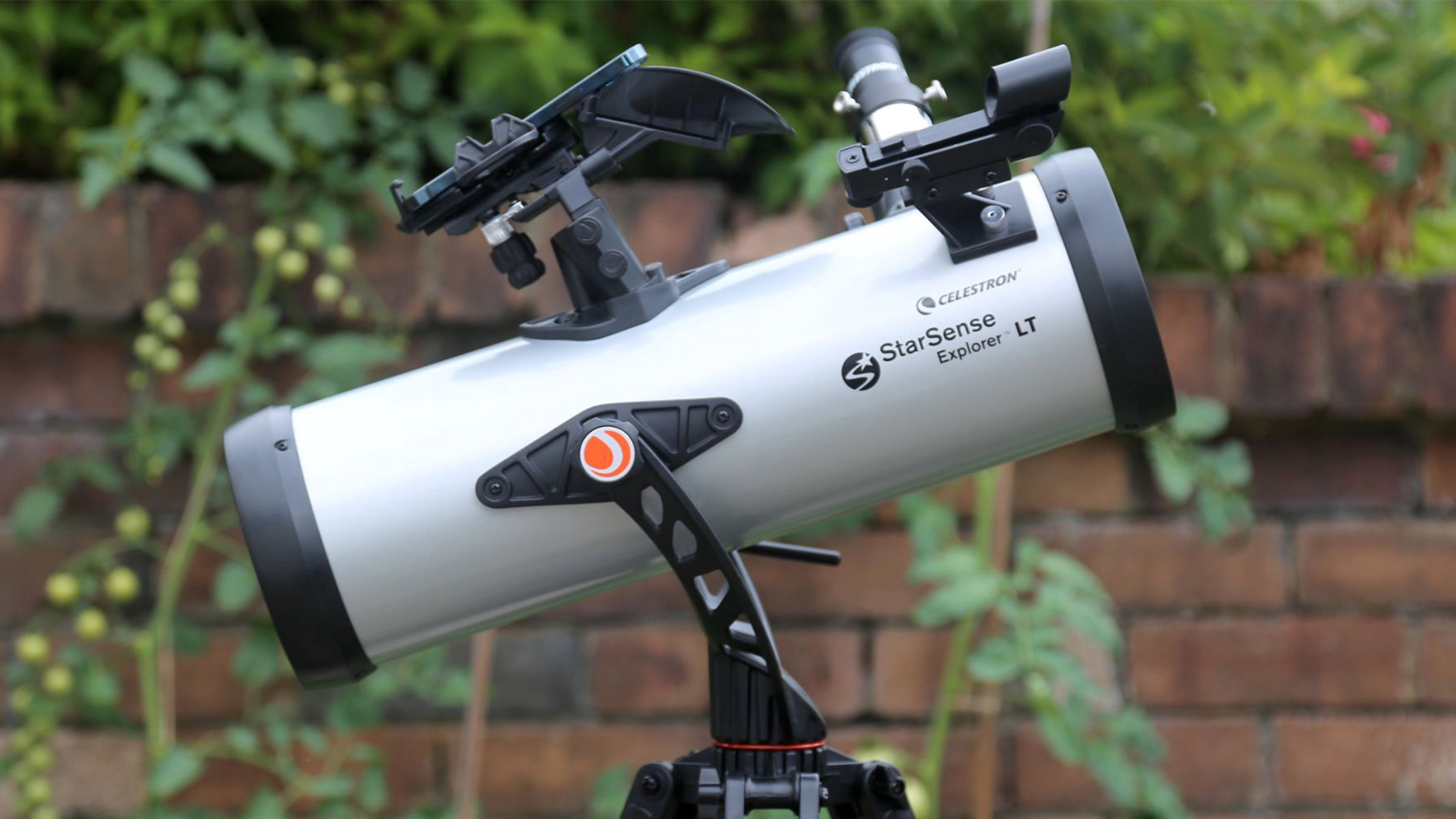
- Excellent StarSense app
- Difficult to point
- Ineffective hand controls
The Celestron StarSense Explorer LT 114AZ is a 'push to' telescope with some serious advantages and disadvantages. On the plus side is StarSense, which uses the smartphone's camera to look at the reflection of stars in that small mirror, quickly plate-solving and cross-referencing them with the stars in its database. It takes seconds and doesn't appear to go out of alignment, which is an enormous advantage for any beginner.
The next step is choosing the target you want to view in the app. The app will guide you with arrows pointing in your target's general direction. You push the Celestron StarSense Explorer LT 114AZ, following the arrows until you see a bullseye. Make smaller and smaller adjustments until the bullseye turns green, meaning your target is in its crosshairs. Look through the eyepiece and your target will be in the center of your field of view. It is incredible!
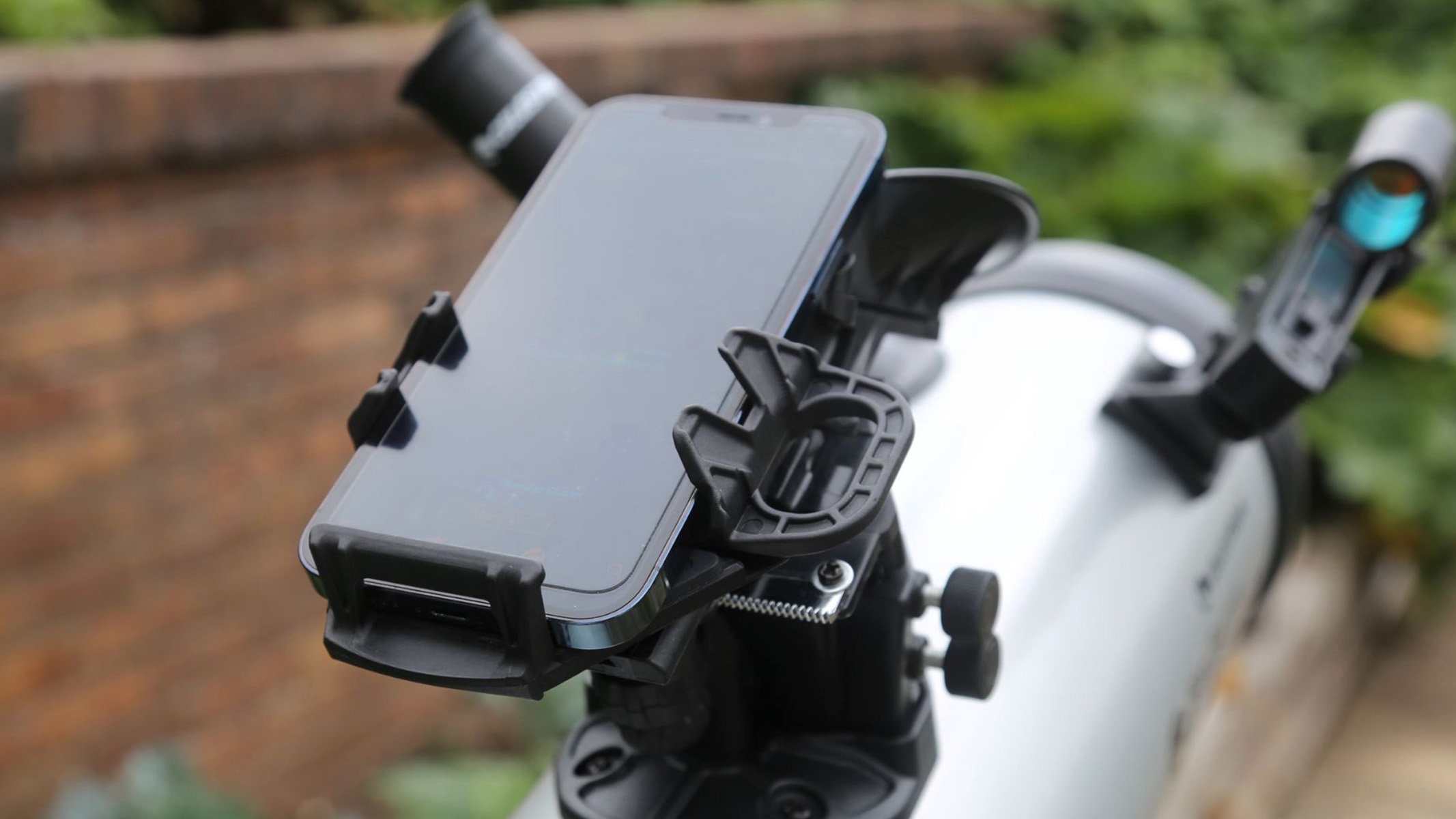
The Celestron StarSense Explorer LT 114AZ isn't the most straightforward telescope to use with SmartSense, primarily because of its average build quality. Firstly, we found its bearings to be rather stiff. Consequently, the telescope was tricky to move accurately left and right, which made zeroing in on a target difficult.
Secondly, it's got way too much recoil, with the telescope needing to be secured quite some way from the intended target for it to settle on when we take our hands off. A slow motion control knob on the altitude (up-down) axis should partly alleviate this, but sadly it's not up to the job of tweaking the field of view finely enough. Better hand controls for both axes are required to make this telescope easy to use. Thirdly, the focus control isn't as smooth as it should be.
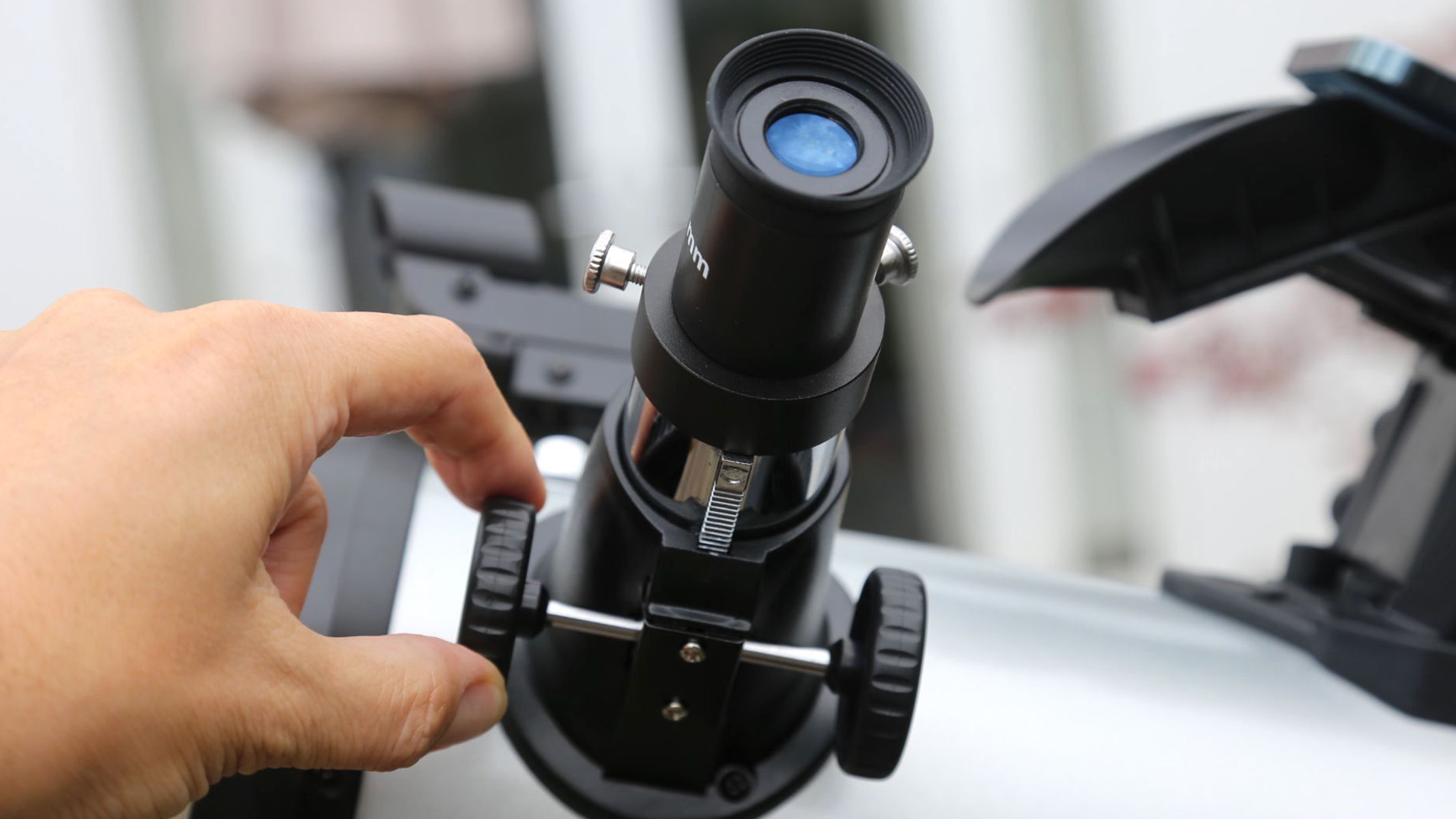
Should you buy the Celestron StarSense Explorer LT 114AZ?
What's the point of having an excellent app that can help you point a telescope anywhere in the sky if the optics are only suited to the moon and planets?
That's at the core of the LT 114AZ's identity crisis, which also suffers from a very basic build quality that makes it difficult to get a fix on targets. Although the excellent StarSense app is wasted on mediocre views of deep sky objects, this small aperture telescope impresses with planets, and its Barlow lens is useful for great views of Saturn, Jupiter and the moon.
If the Celestron StarSense Explorer LT 114AZ telescope isn't for you
If you love the sound of the StarSense app, but want to go a little deeper than just the moon and planets, then Celestron has a couple of higher-grade options. A 5.1-inch/130mm Newtonian reflector telescope, the Celestron StarSense Explorer DX 130AZ telescope has a focal ratio of f/5, so collects more light from distant targets. If you don't mind its 43.4 lbs/19.68 kg bulk, another tempting option for incredible deep sky views is the Celestron StarSense Explorer 8”/203 mm Dobsonian telescope, which offers a focal ratio of f/5.9. It can be moved much more easily for precise subject finding than the Celestron StarSense Explorer LT 114AZ telescope so should make for a smoother and more enjoyable experience.
Join our Space Forums to keep talking space on the latest missions, night sky and more! And if you have a news tip, correction or comment, let us know at: community@space.com.

Jamie is an experienced science, technology and travel journalist and stargazer who writes about exploring the night sky, solar and lunar eclipses, moon-gazing, astro-travel, astronomy and space exploration. He is the editor of WhenIsTheNextEclipse.com and author of A Stargazing Program For Beginners, and is a senior contributor at Forbes. His special skill is turning tech-babble into plain English.
